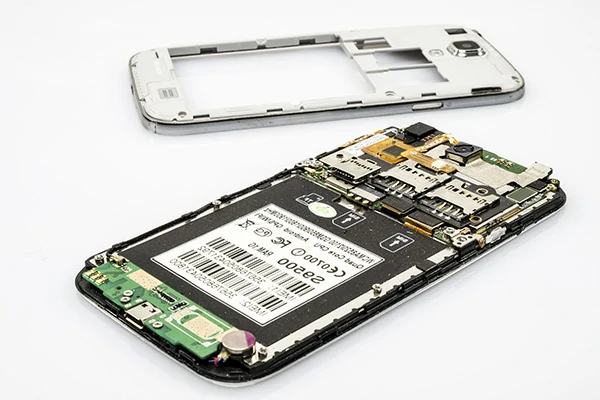
Soldering in phones refers to the process of connecting electronic components and circuitry within mobile phones using solder, a low-melting-point alloy. Soldering is a fundamental technique used in the manufacturing, repair, and assembly of various electronic devices, including smartphones.

Soldering is primarily used for the following purposes:
Component Mounting: During the manufacturing process, electronic components such as resistors, capacitors, integrated circuits (ICs), connectors, and other small parts need to be securely attached to the phone's printed circuit board (PCB). Soldering is employed to create reliable electrical and mechanical connections between these components and the PCB.
Solder Joint Formation: Soldering is used to create solder joints, which are the connections between the component leads and the corresponding pads on the PCB. These joints establish electrical pathways that allow signals to flow between the components, enabling the phone to function properly.
PCB Repair: In cases where a phone experiences a faulty component or a broken connection, soldering is often employed in the repair process. By removing the faulty component and replacing it with a new one, or by repairing broken traces or solder joints, the functionality of the phone can be restored.
Soldering in phones typically involves the use of specialized equipment, such as soldering irons, soldering stations, and hot air rework stations. The soldering process requires careful control of temperature, soldering technique, and the selection of appropriate soldering materials to ensure reliable connections without damaging delicate components.
It's worth noting that with the increasing miniaturization and complexity of smartphone components, soldering in phones has become more intricate and demanding. Advanced techniques like surface mount soldering, ball grid array (BGA) soldering, and reflow soldering are employed to handle the tiny, densely-packed components found in modern smartphones.
Yes, a soldering station can be used for soldering in phones. In fact, a soldering station is a highly recommended tool for soldering delicate components in phones.
Using a soldering station for phone soldering provides numerous advantages over standalone soldering irons. It offers better temperature control, stability, and the ability to work with fine-tipped soldering irons. These features contribute to safer and more precise soldering, minimizing the risk of damage to delicate phone components and ensuring high-quality solder joints.
Click and Learn more about Essential Mobile Phone Repairing Tools
Soldering can potentially damage electronics if not done correctly. Excessive heat from the soldering iron can harm sensitive components, and electrostatic discharge (ESD) can cause damage as well. It's important to use the right temperature, work quickly, and take precautions to prevent ESD. Following proper soldering techniques and safety measures helps minimize the risk of damage.
Soldering in phones is a critical process that enables the assembly, repair, and functionality of mobile devices by establishing electrical connections between components and the PCB.
 WhatsApp
WhatsApp